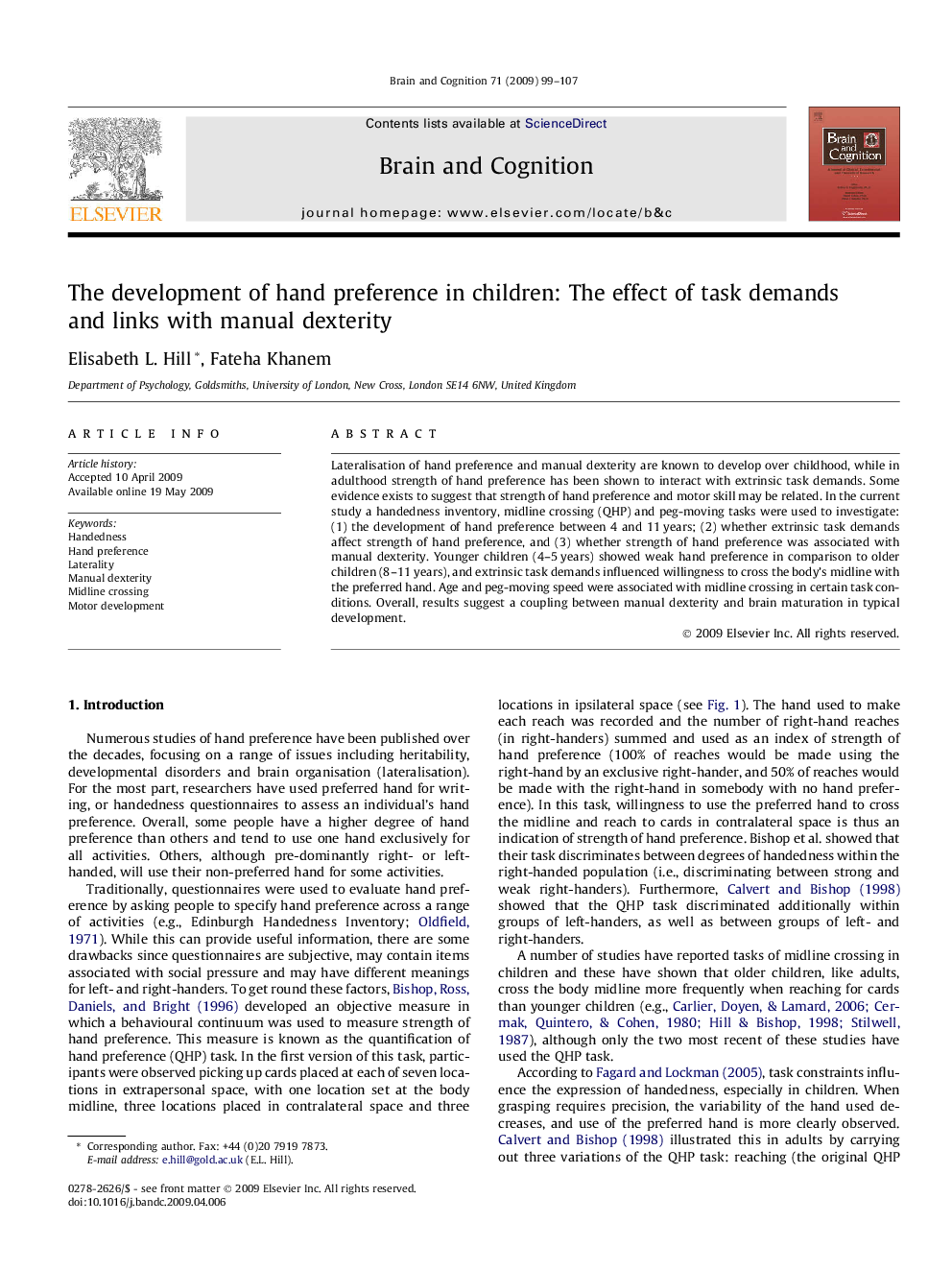| کد مقاله | کد نشریه | سال انتشار | مقاله انگلیسی | نسخه تمام متن |
|---|---|---|---|---|
| 924825 | 921274 | 2009 | 9 صفحه PDF | دانلود رایگان |

Lateralisation of hand preference and manual dexterity are known to develop over childhood, while in adulthood strength of hand preference has been shown to interact with extrinsic task demands. Some evidence exists to suggest that strength of hand preference and motor skill may be related. In the current study a handedness inventory, midline crossing (QHP) and peg-moving tasks were used to investigate: (1) the development of hand preference between 4 and 11 years; (2) whether extrinsic task demands affect strength of hand preference, and (3) whether strength of hand preference was associated with manual dexterity. Younger children (4–5 years) showed weak hand preference in comparison to older children (8–11 years), and extrinsic task demands influenced willingness to cross the body’s midline with the preferred hand. Age and peg-moving speed were associated with midline crossing in certain task conditions. Overall, results suggest a coupling between manual dexterity and brain maturation in typical development.
Journal: Brain and Cognition - Volume 71, Issue 2, November 2009, Pages 99–107